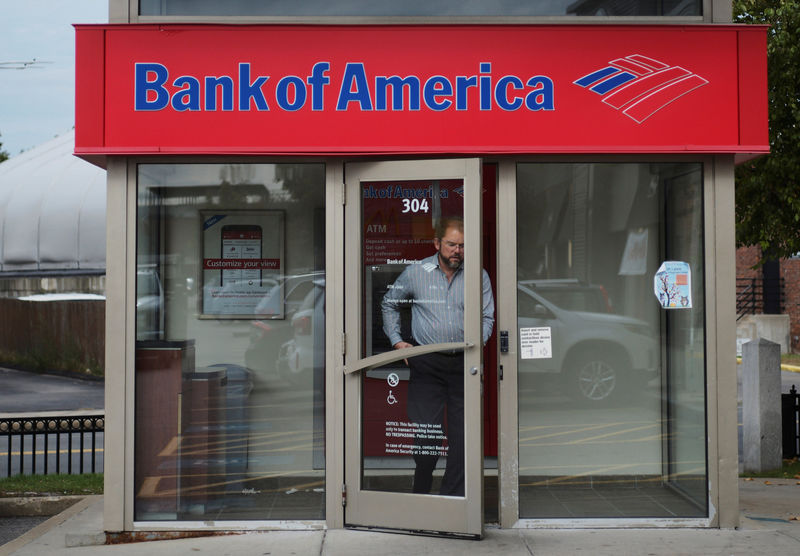By Dan Freed and Nikhil Subba
(Reuters) - Bank of America Corp (N:BAC) beat expectations with a 15 percent rise in third-quarter profit on Friday as the second-largest U.S. lender kept a tight leash on costs and benefited from higher interest rates.
Chief Executive Brian Moynihan's years-long effort to streamline the bank's sprawling operations and keep its costs in check are finally bearing fruit as the Federal Reserve raises borrowing costs.
The lender's large stock of deposits and rate-sensitive mortgage securities make it especially well placed to benefit from rate rises. Its third-quarter earnings performance beat rivals JPMorgan Chase & Co (N:JPM) and Citigroup Inc (N:C), which reported gains of 7.1 percent and 7.6 percent respectively on Wednesday.
"On balance, Bank of America's results stack up better than those of peers," Instinet analyst Steven Chubak said.
The Federal Reserve's three rate increases since December boosted Bank of America's net interest income 9.4 percent to $11.16 billion and the central bank is widely expected to raise rates again in December.
The improved fortunes at Bank of America, which spent years in the doghouse dealing with fines and settlements arising from the financial crisis, contrasts with the 19 percent profit decline Wells Fargo & Co (N:WFC) reported on Friday due to mortgage issues stemming from 2007-09.
Bank of America's shares, which had risen nearly 16 percent year to date, were up almost 1 percent in morning trade while Wells Fargo was down more than 3 percent.
COSTS AND CREDIT
Provisions for credit losses rose 15 percent from the second quarter, driven by credit cards and loan growth and analysts pressed the bank's executives about possible signs of problems with consumer credit. Citigroup and JPMorgan said they expect to charge-off more for bad card loans in the future.
"We're just not seeing it yet in our net charge-offs," Chief Financial Officer Paul Donofrio told the analysts. He said that was true for auto loans, as well as card loans, and could be due to the bank's shift after the financial crisis to focus on lending to customers with prime and superprime credit scores.
Similar to rivals, trading revenue at the Charlotte, North Carolina-based lender fell 15 percent, with revenue from fixed income trading down 22 percent.
For most of the past seven years, Wall Street banks have been grappling with low bond market volatility and new regulations that have restricted certain activities and made trading more expensive.
Bank of America's large consumer banking business and wealth management arm mean it is less dependent on trading than rivals such as Goldman Sachs (N:GS), which reports third-quarter results, along with Morgan Stanley (N:MS), on Tuesday.
Hopes that President Donald Trump will be able to stimulate bond trading activity and boost demand for loans have yet to be fulfilled as his tax overhaul and plans to loosen financial regulations have not yet been realized.
"Tax reform is going to be great for the economy ... but I don't think people are waiting around," Donofrio said.
In the meantime, banks are sticking to their cost-cutting playbook. Bank of America's efficiency ratio, which measures expenses as a percentage of revenues, hit 60, the management's long-term target, for the second quarter in a row.
Moynihan said expenses fell to their lowest level since the fourth quarter of 2008, the last quarter before they took over investment bank Merrill Lynch during the financial crisis.
The bank inched closer to some of its performance goals but its return on equity at 8.1 percent, up from the previous quarter, is still below its 10 percent theoretical cost of capital.
Overall, the bank's net income attributable to common shareholders rose to $5.12 billion for the quarter from $4.45 billion in the year-ago period. Earnings per share rose to 48 cents from 41 cents.

Analysts on average had expected earnings of 45 cents per share, according to Thomson Reuters I/B/E/S.